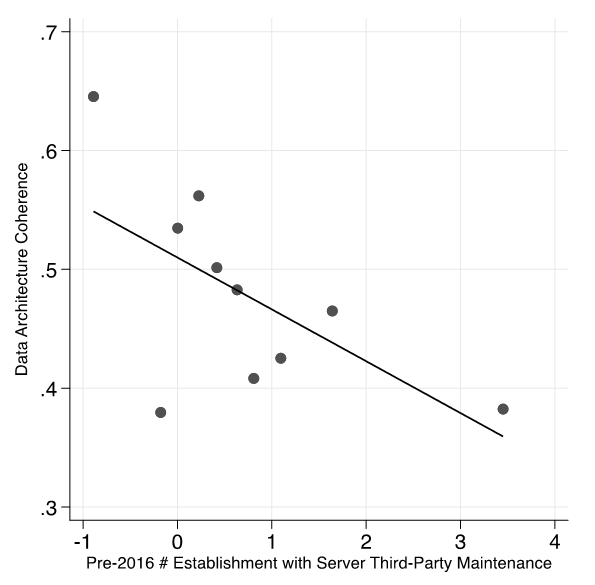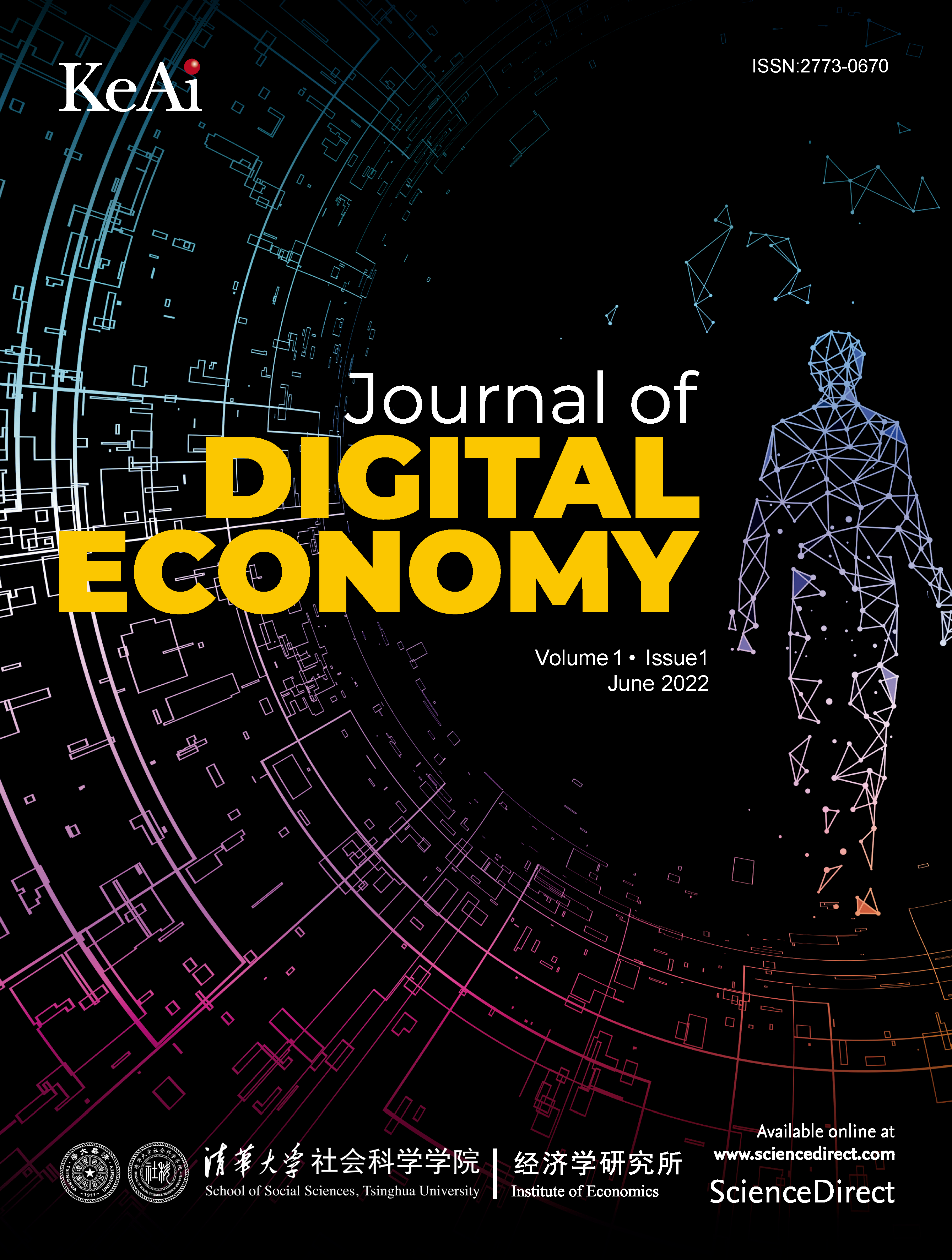博文
数字化转型项目会失败的原因以及如何利用数据架构|Journal of Digital Economy
||
在对大公司数字化转型工作的研究中,研究人员确定了数据架构对于机器学习的有效利用和人工智能的开发起着至关重要的作用,与此同时,企业原有的硬件和复杂的软件系统阻碍了数字化转型、减缓了利用有效技术框架管理分布式数据系统和相关技术的速度。近期刊载于Journal of Digital Economy期刊的论文"Digital transformation, data architecture, and legacy systems"发表了这项研究。
每年,大公司都会在数字化转型项目上花费数万亿美元,旨在确保最先进的数字技术牢固且实时地嵌入到其业务运营中。这些技术不仅包括预测分析与决策支持,也包括推动IT固有模式的转型,即从传统的节省成本和解决技术限制模式转换为主动在组织内创造价值及机会。
然而,大公司在数字改革中并未收到预期的效果,大多数数字化转型项目都以失败告终,给公司造成了巨大的财务损失。来自美国哈佛商学院和瑞典斯德哥尔摩经济学院的一组研究人员探讨了数字改革失败背后的原因,并将其研究成果发表在期刊Journal of Digital Economy上,研究人员在文中提到了企业如何利用新的数字技术(特别是大数据和云计算技术)增加创造商业价值的机会。

Image: Legacy servers and data architecture coherence.
滞后服务器和数据架构的一致性
CREDIT: Harvard Business School
该项研究基于详细的调查数据:在技术层面,调查涵盖了由数字原住民在数据分析和人工智能应用方面开发的一套全面的技术框架和先进工具;在数据层面,研究人员通过Keystone Strategy 和Microsoft对所选定的百余家企业的高级技术主管进行面对面采访。这些企业是从财富1000强中选出,它们的共同点:1)总收入超过 4 万亿美元;2)仍保持着不适用于数字化转型的传统运营模式;3)被固有且复杂的企业体系制约(这些体系多为企业创建并经过多年不断修订)。
研究人员将“数据架构”(即将一个组织的逻辑与实物数据资产和数据管理资源结构化)视为数字化转型成功与否的关键要素。斯德哥尔摩经济学院创业、创新和技术系助理教授 Sam Cao 解释说:“数据架构广泛地捕捉了技术架构在处理多层及管道数据流、合并不同来源和位置的数据集、以及大规模开发和部署机器学习模型三个方面的能力。连贯的数据架构会以自动化和及时的方式整合大量数据,帮助传统公司将技术投资转化为以用户为中心的共同创新。此类共同创新包括机器学习应用程序和嵌入在组织内部的各业务流程─增加数据用户和决策者产出价值─的预测分析。”
研究人员还发现,企业原有系统会对公司调整数据架构、及执行数字转型的能力产生负面影响。Sam Cao介绍说:“现有 IT 系统中过时的技术组件可能会阻碍数字化转型的种种努力,复杂的软件系统进一步加剧了这个问题:即关键任务软件程序呈现多点分布,使得移除变得难上加难。”
她补充说:“本项研究表明,公司在投入数字化转型项目之前应仔细评估这些挑战,同时,研究证明构建一个管理人工智能实用架构的重要性。”
文章信息
Digital transformation, data architecture, and legacy systems
Ruiqing Cao, Marco Iansiti

作者简介

Marco Iansiti
哈佛大学商学院
David Sarnoff 工商管理教授,哈佛信息科学实验室和哈佛商学院数字倡议的联合主任。
研究领域为创新管理,商业生态系统,数字化转型。尤其在商业生态系统及战略影响方面的研究得到了广泛的认可和引用。
文章发表在Management Science, Organization Science, Information Systems Research, Production and Operations Management等国际顶级期刊。
商业生态理论的早期开拓者,著有《The Keystone Advantage: What the New Dynamics of Business Ecosystems Mean for Strategy, Innovation, and Sustainability》等。

Ruiqing "Sam" Cao
哈佛大学创新科学实验室
博士后研究员
研究领域为数字经济,与创业、金融和劳动力市场等主题相交叉。
期刊简介
工业革命将人类从早期的农业社会转变为工业化时代,而21世纪则见证了数字文明的崛起。Journal of Digital Economy (JDE)由清华大学社会科学学院经济学研究所与科爱共同创办,致力于阐明这个数字时代是如何扩展、重组和挑战现有知识和传统方法的。JDE是一个多学科的平台,包括但不限于经济学、管理学、社会学、政治经济学,计算机科学和环境科学。JDE研究如何在数字时代提高经济福祉、社会公平和环境可持续性。JDE欢迎以实践和政策为导向的研究,以应对我们这个时代特有的挑战和利用机遇。
主编

戎珂
清华大学社科学院经济学所
清华大学长聘教授、博导
研究方向为商业/创新生态系统、数字经济和数据生态
推荐阅读
Why digital transformation projects fail and how data architecture can help
Summary: In a study of large corporations’ digital transformation efforts, researchers identified data architecture as crucial for the development of machine learning and artificial intelligence capabilities. They also established that legacy hardware and complex software systems hinder digital transformation, slowing down the adoption of an effective technical framework for managing distributed systems of data and related technologies.
Every year, large corporations spend trillions of dollars on digital transformation projects, designed to help them firmly embed digital technologies in their business operations. These technologies include predictive analytics and decision-support systems, and have the potential to transform the traditional focus of IT from saving costs and solving technical constraints to proactively creating value and opportunities across the organisation.
However, implementation challenges mean many of these digital transformation projects end in failure, leading to huge financial losses for the companies involved. In an empirical study published in KeAi’s Journal of Digital Economy, researchers from the US’ Harvard Business School and Stockholm School of Economics in Sweden, explored the reasons behind these challenges, and examined how enterprises can improve their chances of driving business value creation from new digital technologies, especially big data and cloud computing.
The study drew on detailed survey data. This was collected by Keystone Strategy and Microsoft via in-person interviews with senior technology executives at more than 100 traditional Fortune 1000 corporations, with combined revenues of over $4 trillion. The survey covered a comprehensive set of technical frameworks and advanced tools developed by digital natives in data analytics and AI adoption. And the surveyed corporations were chosen for their traditional operating models, which can negatively impact the adoption of new digital technologies. These companies are often constrained by complex legacy enterprise systems that have been created and modified over long periods of time.
The researchers identified “data architecture”, in other words, the way in which an organisation’s logical and physical data assets and data management resources are structured, as a crucial element in successful digital transformation. Sam Cao, an Assistant Professor at the Department of Entrepreneurship, Innovation and Technology at Stockholm School of Economics, explains: “Data architecture broadly captures the technological architecture’s capabilities around processing data streams through multiple layers and pipelines, combining data sets across various sources and locations, and developing and deploying machine learning models at scale. A coherent data architecture allows firms to integrate large amounts of data in an automated and timely manner. It helps traditional corporations translate technical investments into user-centric co-inventions. Such co-inventions include machine learning applications and predictive analytics embedded across the organisation in various business processes, which increase the value of work conducted by data users and decision-makers.”
The researchers also found that legacy systems negatively affected a firm’s ability to align their data architecture and commit to transformation. Cao says: “Outdated technology components within existing IT systems can encumber digital transformation efforts. Complex software systems further exacerbate the problem. Mission-critical software applications are embedded in many parts of the organisation, making legacy technologies even harder to remove.”
She adds: “The study points to the fact that firms should carefully evaluate these challenges before committing to digital transformation initiatives, and it highlights the importance of a practical architectural framework for managing AI.”

Image: Legacy servers and data architecture coherence. CREDIT: Harvard Business School
Contact the corresponding author: Sam Ruiqing Cao, sam.cao@hhs.se
The publisher KeAi was established by Elsevier and China Science Publishing & Media Ltd to unfold quality research globally. In 2013, our focus shifted to open access publishing. We now proudly publish more than 100 world-class, open access, English language journals, spanning all scientific disciplines. Many of these are titles we publish in partnership with prestigious societies and academic institutions, such as the National Natural Science Foundation of China (NSFC).
Funder: This study was funded by Harvard Business School, USA
Journal: Journal of Digital Economy
DOI: https://doi.org/10.1016/j.jdec.2022.07.001
Article title: Digital transformation, data architecture, and legacy systems
Conflict of interest: The authors declare that they have no known competing financial interests or personal relationships that could have appeared to influence the work reported in this paper.
https://m.sciencenet.cn/blog-3496796-1356623.html
上一篇:科爱第一届数字医疗大会恭候您的到来!
下一篇:SSB | Mattheos Koffas团队:QSPR建模在人工核糖开关结构与功能研究中的应用